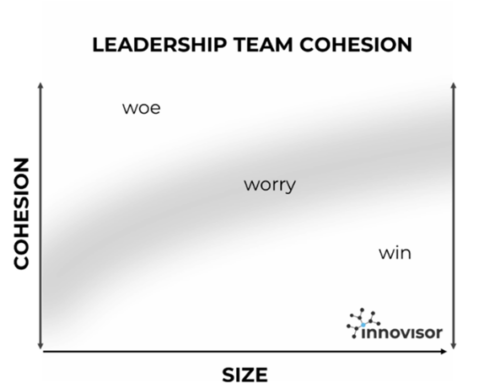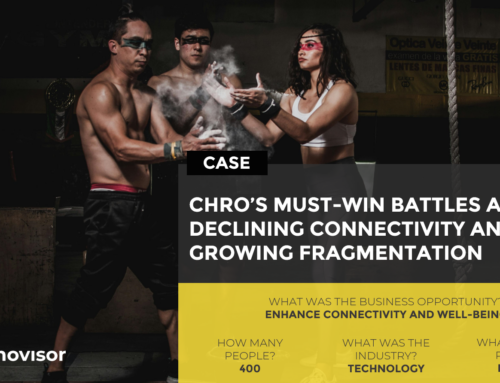LEADERSHIP | DIVERSITY & INCLUSION
Large-Scale Community Mapping Done in 7 Days
July 18th, 2024 | Drive Collaboration
Networks are everywhere. They exist not only within companies or organizations but also in large-scale, purpose-driven communities across the city, region, or country you live in. Whether you are facilitating innovation in a region like Silicon Valley with all its tech companies or encouraging citizens to choose cycling over driving like in my hometown of Copenhagen, enabling networks is just as crucial as within companies and organizations.
Large-scale, purpose-driven communities are unique with no clear boundaries, making it seem daunting to understand their networks. Connections are fluid, and influences can come from unexpected sources outside the community. This complexity may feel overwhelming and time-consuming, but it doesn’t have to be.
From my experience with community mapping, patterns begin to form quickly once data collection starts. Within just a week, you can obtain valuable insights into the structure and dynamics of the system, helping you identify who to engage with, on what, for maximum impact.
When do patterns emerge?
Let me give you an example of a community of people who were loosely connected for the purpose to impact a specific cause in a region with over 500,000 people.
Within the first 24 hours of asking people who they turn to around a specific cause in their community, initial patterns already began to emerge. Individuals frequently shared connections to those already pointed to by others, creating an immediate feedback loop that highlighted the size of the community as well as key figures in the network – those repeatedly identified as central hubs of connections and influence.

After the initial 24 hours, the size of the community network did not continue to grow at the same pace. The curve in the visual above showed a rapid increase in the first 24 hours, followed by a slower rate. As the quantity of the network stabilized, the focus shifted to the quality of the community network.
The following days revealed the intensity of connections and identified central individuals within the network. These individuals represented the ‘go-to’ people for the community, indicating potential bottlenecks or influencers within the community. Additionally, these following days uncovered previously unknown areas, mapping out peripheral connections and lesser-known influencers.

Efficiency Over Exhaustiveness
This large-scale community demonstrates that excessive data collection is not necessary to gain meaningful insights. By acting fast on initial data, patterns emerged quickly, enabling you to understand the community’s dynamics efficiently.
The key takeaway is that in large-scale, purpose-driven communities, the goal should be to identify and act upon these emergent patterns swiftly, rather than getting bogged down by the quest for complete data. Such an approach not only saves time and resources but also provides a dynamic and responsive way to understand complex, fluid networks.
Let me finish this by sharing a testimonial of Jeannie G Kim.
She led a community for the purpose of strengthening the economic development of a region by working together with public and private organizations. She mentioned that such a community mapping “provided true building blocks with limited time and limited resources”.
If you wonder how the community members received the insights, listen to Jeannie:
LEADERSHIP | DIVERSITY & INCLUSION
Large-Scale Community Mapping Done in 7 Days
July 18th, 2024 | Drive Collaboration
Networks are everywhere. They exist not only within companies or organizations but also in large-scale, purpose-driven communities across the city, region, or country you live in. Whether you are facilitating innovation in a region like Silicon Valley with all its tech companies or encouraging citizens to choose cycling over driving like in my hometown of Copenhagen, enabling networks is just as crucial as within companies and organizations.
Large-scale, purpose-driven communities are unique with no clear boundaries, making it seem daunting to understand their networks. Connections are fluid, and influences can come from unexpected sources outside the community. This complexity may feel overwhelming and time-consuming, but it doesn’t have to be.
From my experience with community mapping, patterns begin to form quickly once data collection starts. Within just a week, you can obtain valuable insights into the structure and dynamics of the system, helping you identify who to engage with, on what, for maximum impact.
When do patterns emerge?
Let me give you an example of a community of people who were loosely connected for the purpose to impact a specific cause in a region with over 500,000 people.
Within the first 24 hours of asking people who they turn to around a specific cause in their community, initial patterns already began to emerge. Individuals frequently shared connections to those already pointed to by others, creating an immediate feedback loop that highlighted the size of the community as well as key figures in the network – those repeatedly identified as central hubs of connections and influence.

After the initial 24 hours, the size of the community network did not continue to grow at the same pace. The curve in the visual above showed a rapid increase in the first 24 hours, followed by a slower rate. As the quantity of the network stabilized, the focus shifted to the quality of the community network.
The following days revealed the intensity of connections and identified central individuals within the network. These individuals represented the ‘go-to’ people for the community, indicating potential bottlenecks or influencers within the community. Additionally, these following days uncovered previously unknown areas, mapping out peripheral connections and lesser-known influencers.

Efficiency Over Exhaustiveness
This large-scale community demonstrates that excessive data collection is not necessary to gain meaningful insights. By acting fast on initial data, patterns emerged quickly, enabling you to understand the community’s dynamics efficiently.
The key takeaway is that in large-scale, purpose-driven communities, the goal should be to identify and act upon these emergent patterns swiftly, rather than getting bogged down by the quest for complete data. Such an approach not only saves time and resources but also provides a dynamic and responsive way to understand complex, fluid networks.
Let me finish this by sharing a testimonial of Jeannie G Kim.
She led a community for the purpose of strengthening the economic development of a region by working together with public and private organizations. She mentioned that such a community mapping “provided true building blocks with limited time and limited resources”.
If you wonder how the community members received the insights, listen to Jeannie:
Related articles
Share article
Share article









